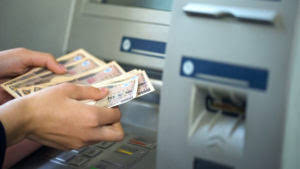Content

All fixed assets are shown on the balance sheet at original cost, minus any depreciation. Subtracting depreciation is a conservative accounting practice to reduce the possibility of over valuation. Depreciation subtracts a specified amount from the original purchase price for the wear and tear on the asset.
Harmony Launcher has a HARL Insurance in which you facilitate an insurance protocol in order to secure and prevent all of your liquidity providers from falling into any impermanent loss. So,is this insurance is applicable for all LPs?What is the minimum amount to be insured?
— PiloT✈️ (@PiloT9804) February 12, 2022
Liquidity refers to a business’s ability to meet its payment obligations, in terms of possessing sufficient liquid assets, and to such assets themselves. For assets, liquidity is an asset’s ability to be sold without causing a significant movement in the price and with minimum loss of value. Users of financial statements need to pay particular attention to the explanatory notes, or the financial review, provided by management in annual reports. This integral part of the annual report provides insight into the scope of the business, the results of operations, liquidity and capital resources, new accounting standards, and geographic area data.
Working Capital
He currently researches and teaches at the Hebrew University in Jerusalem. A typical balance sheet starts with a heading which consists of three lines. The first line presents the name of the company; the second describes the title of the report; and the third states the date of the report. Conversion to cash depends on how active an after-market there is for these items. In practice, the most widely used title is Balance Sheet; however Statement of Financial Position is also acceptable.
Another format is Report Form, a running format in which your assets are listed at the top of the page and followed by liabilities and stockholders’ equity. Sometimes total liabilities are deducted from total assets to equal stockholders’ equity. Fixed assets are items that a company or organization use to create their goods and services, including furniture, vehicles, land, buildings and more. These assets can take anywhere from a few days to a few months to sell depending on their current market potential. These assets are also very important to a business’s overall production, therefore companies often wait to sell these items unless there is an emergency need for cash. When listing fixed assets, companies will put their original price minus any depreciation that’s occurred. This helps to show how much each item will sell for realistically.
Do Liabilities Have To Be In Order Of Liquidity?
The two main types of liquidity include market liquidity and accounting liquidity. LiquidityLiquidity shows the ease of converting the assets or the securities of the company into the cash. Liquidity is the ability of the firm to pay off the current liabilities with the current assets it possesses. Companies often generate balance sheets at the end of every accounting period and fiscal year. However, some investors or company officials can request a balance sheet at any time to help solve financial challenges or gain a better understanding of the company’s operations. In any corporation understanding appropriate accounting concepts is of vital importance.
Many small businesses may not own a large amount of fixed assets, because most small businesses are started with a minimum of capital. Of course, fixed assets will vary considerably and depend on the business type , size, and market.
What Are Business Assets?
Companies fail all the time because of a lack of cash flow, so liquidity is an existential concern for any business. The available credit on your charge card isn’t a liquid asset or even an asset of any type, although it can increase your ability to make purchases. Liquid assets are those that are easily convertible to cash, such as money market accounts and savings accounts. Property, Plant and Equipment Assets which are held for the purpose of earning rentals are also part of property, plant, and equipment.

Some of these may include prepaid expenses that haven’t been used up yet, such as advertising and insurance, the amount of a business sale price above its tangible assets, called goodwill, and land improvements. Financial liquidity refers to how easily assets can be converted into cash. Assets like stocks and bonds are very liquid since they can be converted to cash within days. The financial statement prepared first is your income statement. As you know by now, the income statement breaks down all of your company’s revenues and expenses. You need your income statement first because it gives you the necessary information to generate other financial statements. Marketable securities are items such as stocks, bonds and commercial papers that companies can convert to cash within a few business days.
You show the amounts owed to trade creditors that arise from the purchase of materials or merchandise as accounts payable. If you are obligated under promissory notes that support bank loans or other amounts owed, your liability is shown as notes payable.
What Is Order Of Liquidity?
Large businesses also may prepare balance sheets for segments of their businesses. A balance sheet is often presented alongside one for a different point in time for comparison.
They compete with each other—often fiercely—and spread their risk across multiple venues. If they see a penny or two of edge, you’re likely to find a taker between the displayed bid/ask. The sellers at the front of the line are willing to sell contracts for 90 cents. Further back, sellers are asking progressively higher prices, say up to 93 cents. The buyers first in line are likely to get in at the 90 cent price. The buyers in the middle or back of the line will likely be matched with sellers at the higher prices. This image, though not perfect, illustrates how slippage happens when you place a market order.
In financial accounting, owner’s equity consists of the net assets of an entity. Net assets is the difference between the total assets of the entity and all its liabilities. Equity appears on the balance sheet, one of the four primary financial statements. The current ratio is a liquidity ratio that measures a company’s ability to cover its short-term obligations with its current assets. Generally, the assets that are expected to turn to cash within one year are reported on the balance sheet in the section with the heading current assets.
Liquidity Services (NASDAQ:LQDT) Issues Q2 2022 Earnings Guidance – MarketBeat
Liquidity Services (NASDAQ:LQDT) Issues Q2 2022 Earnings Guidance.
Posted: Mon, 14 Feb 2022 15:23:45 GMT [source]
They are expected to be used, collected or sold within the year. Companies use what is order of liquidity assets to run their business, manufacture items or create value in other ways.
The Balance Sheet
Below is a sample balance sheet, with definitions and descriptions of the key elements. Harold Averkamp has worked as a university accounting instructor, accountant, and consultant for more than 25 years. He is the sole author of all the materials on AccountingCoach.com. Liquidity order helps in times of emergencies by providing quick funds to overcome the scenario that is being faced by the organization.
A current asset on the balance sheet is an asset which can either be converted to cash or used to pay current liabilities within 12 months. Typical current assets include cash and cash equivalents, short-term investments, accounts receivable, inventories and the portion of prepaid liabilities which will be paid within a year.
- The current ratio is a liquidity ratio that measures a company’s ability to cover its short-term obligations with its current assets.
- Inventory, or the products a company sells to generate revenue, is usually considered a current asset, because generally it will be sold within a year.
- These liabilities have included short terms loans, Sundry Creditors & Outstanding expenses.
- Liabilities are the debts owed by a business, often incurred to fund its operation.
- Such assets suffer a valuation loss when sold in exchange for cash.
ORDINARY INCOME is the income derived from the regular operating activities of a business or individual, but exclusive of capital gains. Net income from a business, along with personal wages, interest, and dividends are examples of ordinary income. Intangible AssetsIntangible Assets are the identifiable assets which do not have a physical existence, i.e., you can’t touch them, like goodwill, patents, copyrights, & franchise etc. They are considered as long-term or long-living assets as the Company utilizes them for over a year. Again, you’ll want to use a limit order to help you uncover some off-screen liquidity. And when you’re ready to close out that position, you might also choose to use a limit order, with an asking price somewhere between the displayed bid and offer.
Finance Your Business
Cash management involves identifying the cash balance which allows for the business to meet day-to-day expenses, but reduces cash holding costs. Equity is the residual claim or interest of the most junior class of investors in assets, after all liabilities are paid. The balance sheet contains details on company liabilities and owner’s equity. A company’s equity represents retained earnings and funds contributed by its shareholders. Peggy James is a CPA with over 9 years of experience in accounting and finance, including corporate, nonprofit, and personal finance environments. She most recently worked at Duke University and is the owner of Peggy James, CPA, PLLC, serving small businesses, nonprofits, solopreneurs, freelancers, and individuals.
These expenses are payments made for services that will be received in the near future. Strictly speaking, your prepaid expenses will not be converted to current assets in order to avoid penalizing companies that choose to pay current operating costs in advance rather than to hold cash. Measures the capability of the cash generation capability of any asset. It gives an idea about the dividends that are going to be received by the shareholders.
These get converted into cash according to the company’s credit policy. The order of liquidity helps investors and shareholders understand the financial strength of a company, so they can make decisions about future investments. It can also help them predict the dividends they might receive at the end of the fiscal year and how they should reinvest. Historically, balance sheet substantiation has been a wholly manual process, driven by spreadsheets, email and manual monitoring and reporting. In recent years software solutions have been developed to bring a level of process automation, standardization and enhanced control to the balance sheet substantiation or account certification process.
Liabilities should be arranged on the balance sheet in order of how soon they must be repaid. Current assets are important to businesses because they can be used to fund day-to-day business operations and to pay for ongoing operating expenses.
